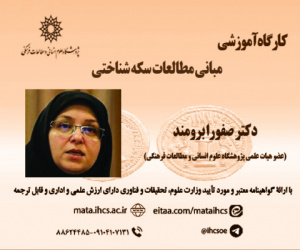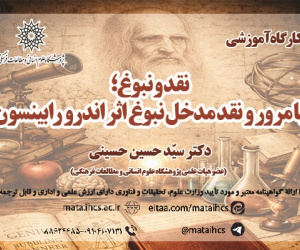مردم نگاری انتقادی: یک ارزیابی نظری (مقاله علمی وزارت علوم)
درجه علمی: نشریه علمی (وزارت علوم)
آرشیو
چکیده
زمینه و هدف: تحقیق و گفتگو پیرامون انسان همواره در طول تاریخ محل بحث و مناقشه بوده است. علوم اجتماعی در این میان مسئولیت مطالعه و بررسی رفتارها و کنش های تغییرپذیر انسانی را عهده دار بوده است. به دلیل قابلیت کنشگری خلاقانه انسان در کنار فعالیت های عقلانی وی، حصول شناخت کامل در این حوزه بسیار مورد تردید قرار می گیرد. از جانب دیگر، علوم اجتماعی نیز به نوبه خود محدودیت ها و اریب هایی در ذات خود نهفته دارد که مربوط به نقش محقق در تحقیق است. به همین دلیل اندیشمندان زیادی به این روند انتقاد کردند و سعی نمودند انواع متفاوتی از روش های تحقیق در علوم اجتماعی را ابداع نمایند. در این مسیر، مردم نگاری انتقادی از جمله کارآمدترین و جدیدترین روش های موجود در علوم اجتماعی به شمار می رود. در این مقاله سعی می شود بنیان های هستی شناختی، معرفت شناختی و روش شناختی این روش بررسی شود. روش و داده ها: روش مورد استفاده در این پژوهش از نوع مطالعه اسنادی است. یافته ها: مردم نگاری انتقادی و به خصوص روش ویژه کارسپیکن، فرصتی را برای به کارگیری طیف وسیعی از روش های جمع آوری داده ها، از عکاسی و رسانه های ترکیبی گرفته تا روش های تحلیل گفتمان ارائه می دهد. این بدان معناست که نه تنها محقق می تواند روش هایی را که ترجیح می دهد انتخاب کند، بلکه ممکن است رویکردی باشد که به احتمال زیاد بینش های جدید و جالبی را ایجاد می کند و می تواند به طور متفاوت برای پروژه های مختلف به کار گرفته شود. بحث و نتیجه گیری: با کاربرد روش مردم نگاری انتقادی، محقق علوم اجتماعی سعی می کند بین پارادایم های غالب حرکت کند و از توانایی آنها با بندزنی های پراگماتیستی، از رویه های اتیک و امیک استفاده کند و در نهایت به فهم و بینش جامعه شناختی بیفزاید که البته این بینش سراسر انتقادی است. پیام اصلی: کارسپیکن در روش مردم نگاری انتقادی خود با گره زنی های پارادایمیک، روشی جدید خلق می کند که سراسر انتقادی است. این روش فرصتی را برای به کارگیری طیف وسیعی از روش های جمع آوری داده ها، از عکاسی و رسانه های ترکیبی گرفته تا روش های تحلیل گفتمان ارائه می دهد.Critical Ethnography: A Theoretical Assessment
Background and Aim: Research on human bahavoir and attitudes has always been the subject of debate throughout history. The social sciences undertake the study of the ever-changing nature of human behaviors and actions. Due to the human's creative agency alongside their rationality, attaining a comprehensive understanding in this domain is often met with skepticism. Moreover, the social sciences have inherent limitations and uncertainties, particularly concerning the researcher's role within the rsearch process. Consequently, many scholars have criticized prevailing methodologies, prompting the development of diverse research techniques within the social sciences. Among these, critical ethnography emerges as a particularly potent and innovative method. This article attempts to examine the ontological, epistemological, and methodological foundations of critical ethnography.
Methods and Data: This study employs a documentary research methodology.
Findings: Critical ethnography, with its distinctive technique of participant observation, opens avenues for a broad spectrum of data collection methods, ranging from photography and mixed media to discourse analysis. This flexibility allows researchers to select methods that align with their preferences and project needs, fostering the potential for new and intresting insights.
Conclusion: The application of critical ethnography enables researchers in the social sciences to maneuver among dominant paradigms and leverage their capabilities through pragmatist insights, utilizing ethical emic approaches, thereby enhancing sociological understanding and insight, which, of course, is entirely critical in nature.
Key Message: In his critical ethnography framework, Carspecken introduces a new approach characterized by paradigmatic interweaving that is entirely critical. This approach provides an opportunity to utilize a wide range of data collection techniques, from photography and mixed media to various discourse analysis methods.









